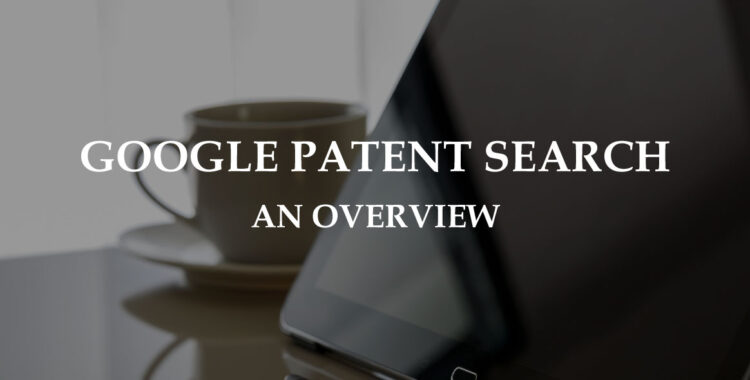Google Patent Search – An Overview
Google Patent Search is an invaluable tool for inventors, researchers, and businesses looking to explore patent information, understand the competitive landscape, or protect their intellectual property rights. It is a user-friendly, free, and accessible platform that allows anyone to search and analyze millions of patents from around the world.
At Kaufhold & Dix Patent Law, we often encourage our clients to perform some patent searching on their own prior to seeing us as a way to not only potentially save money, but so that they become familiar with patents in general and in particular those patents having a structure or function similar to that found in their idea. Though it will never replace a search by a trained patent searcher, Google Patents is often suggested as a user-friendly option for a client searching tool. In this article, we will provide an overview of Google Patent Search, and discuss its key features, benefits, limitations, and tips for effective patent searches. By understanding how to use this powerful tool, you can efficiently navigate the world of patents and gain valuable insights into your field of interest.
Contents:
- Key Features of Google Patent Search
- Global Coverage
- Benefits of Using Google Patent Search
- Limitations and Challenges
- Tips for Effective Patent Searches
- The Importance of Consulting a Credible Patent Lawyer
- Conclusion
Key Features of Google Patent Search
Advanced Search Functionality
Google Patent Search offers advanced search functionality that allows users to search for patents using various criteria, including patent number, inventor, assignee, title, abstract, and filing or publication date. Users can also filter their search results by patent classification, legal status, and jurisdiction, which enables them to find relevant patents easily and quickly.
Patent Classification System
The Google Patent Search platform incorporates the Cooperative Patent Classification (CPC) system, an internationally recognized patent classification system jointly developed by the European Patent Office (EPO) and the United States Patent and Trademark Office (USPTO). This system allows users to search for patents based on their technical content, facilitating more accurate and efficient patent searches. By using the CPC system, users can easily navigate the extensive database of patents and discover relevant technologies in their field.
Integrated Non-Patent Literature
One of the unique features of Google Patent Search is the integration of non-patent literature, such as scientific articles, journals, and books. This feature allows users to access and review prior art, which is essential for determining the novelty and inventiveness of a particular technology. By incorporating non-patent literature into the search results, Google Patent Search provides a comprehensive overview of the state of the art in a given field.
Google Scholar Integration
Google Patent Search seamlessly integrates with Google Scholar, a widely-used search engine for academic publications. By linking these two platforms, users can easily access relevant scholarly articles and publications related to the patents they are researching. This integration helps users gather a complete understanding of the technology landscape and assists in the decision-making process for patenting or developing new technologies.
Intellectual Property Playbook
An Entrepreneur's Guide To Patents, Trademarks, and Copyrights GET THE PLAYBOOK
Global Coverage
Google Patent Search offers extensive global coverage, providing access to millions of patents from over 100 countries and jurisdictions. Users can search for patents filed with various patent offices, such as the USPTO, EPO, World Intellectual Property Organization (WIPO), and national patent offices. This global coverage enables users to gain a comprehensive understanding of the international patent landscape and identify potential competitors or partners in different markets.
Benefits of Using Google Patent Search
Google Patent Search offers several benefits to its users, including:
- Free and accessible: Google Patent Search is a free resource that requires no subscription or registration. This makes it an ideal tool for individuals and small businesses with limited resources.
- User-friendly interface: The platform has a simple and intuitive interface, making it easy for users with no prior experience to navigate and use.
- Comprehensive patent information: Google Patent Search provides access to a vast amount of patent information, including patents filed with various patent offices around the world, non-patent literature, and scholarly articles through Google Scholar integration.
- Advanced search functionality: Users can perform targeted searches using various criteria and filters, making it easier to find relevant patents and related information.
- Patent classification system: The incorporation of the CPC system allows for more accurate and efficient patent searches based on technical content.
Limitations and Challenges
Despite its many advantages, Google Patent Search has some limitations and challenges:
- Currency of information: Google Patent Search may not always have the most up-to-date information on patent applications, especially for recent filings or pending applications.
- Legal status accuracy: The platform might not always accurately reflect the current legal status of a patent, which can be essential for decision-making in patent-related matters.
- Incomplete data: Although Google Patent Search offers extensive global coverage, it might not have complete data for all jurisdictions, particularly for smaller patent offices or non-English patent documents.
- Limited search capabilities: The platform does not offer some advanced search features available in other patent search tools, such as semantic search or visualizations.
Tips for Effective Patent Searches
To make the most of Google Patent Search, consider the following tips:
- Use the advanced search functionality: Utilize the various search criteria and filters available to perform targeted searches and find relevant patents more efficiently.
- Familiarize yourself with the patent classification system: Understanding the CPC system will help you conduct more accurate and efficient searches based on technical content.
- Cross-reference with other sources: To ensure the accuracy and completeness of your search results, consider cross-referencing with other patent search tools, databases, or resources, especially for recent filings or legal status information.
- Integrate non-patent literature and Google Scholar: Make use of the platform’s integration with non-patent literature and Google Scholar to gather a comprehensive understanding of the technology landscape and related research.
- Develop a search strategy: Plan your search approach by defining your objectives, determining relevant keywords, and selecting appropriate search criteria and filters.
The Importance of Consulting a Credible Patent Lawyer
While Google Patent Search is a powerful tool for preliminary patent research, it is essential to consult a credible patent lawyer when conducting a comprehensive patent search and determining patentability. Patent lawyers themselves often use specialists for prior art searches because such specialists are very adept at finding references even a skilled patent lawyer will miss. Moreover, patent lawyers possess the necessary expertise and experience to determine the relevancy of the located references when making a determination as to whether or not a particular invention is, or is not, likely patentable. Finally, a patent attorney is essentially required to navigate the patent process to ensure the idea is properly protected.
A credible patent lawyer can help you through the patent process in the following ways:
Conduct a thorough patent search
Patent lawyers are well-versed in advanced search techniques and have access to specialized databases and tools that can provide more accurate and up-to-date information, ensuring a comprehensive patent search.
Assess patentability
Patent lawyers can help evaluate the novelty, inventiveness, and industrial applicability of an invention, which are critical factors in determining patentability. They can also provide a well-developed skill set when drafting patent claims that avoid prior art references found during a patent search to maximize the chances of obtaining a patent.
Identify potential conflicts
A patent lawyer can help you identify potential conflicts with existing patents and advise you on strategies to address these issues, such as modifying the invention, obtaining a license, or challenging the validity of the conflicting patent.
Navigate the patent application process
Applying for a patent can be a complex and time-consuming process, involving the preparation of detailed technical documents, communication with patent examiners, and potentially addressing objections or rejections. A credible patent lawyer can guide you through this process, ensuring that your patent application meets the necessary legal and technical requirements.
Protect your intellectual property rights
Securing a patent is just the first step in protecting your intellectual property rights. A patent lawyer can help you enforce your patent, defend against infringement claims, and advise you on licensing or commercialization strategies.
Conclusion
In conclusion, while Google Patent Search is a valuable resource for preliminary patent research, it is crucial to consult a credible paten lawyer when conducting a comprehensive patent search and determining patentability. By leveraging their expertise and experience, you can maximize the chances of securing and protecting your intellectual property rights, and ultimately, the success of your invention.








